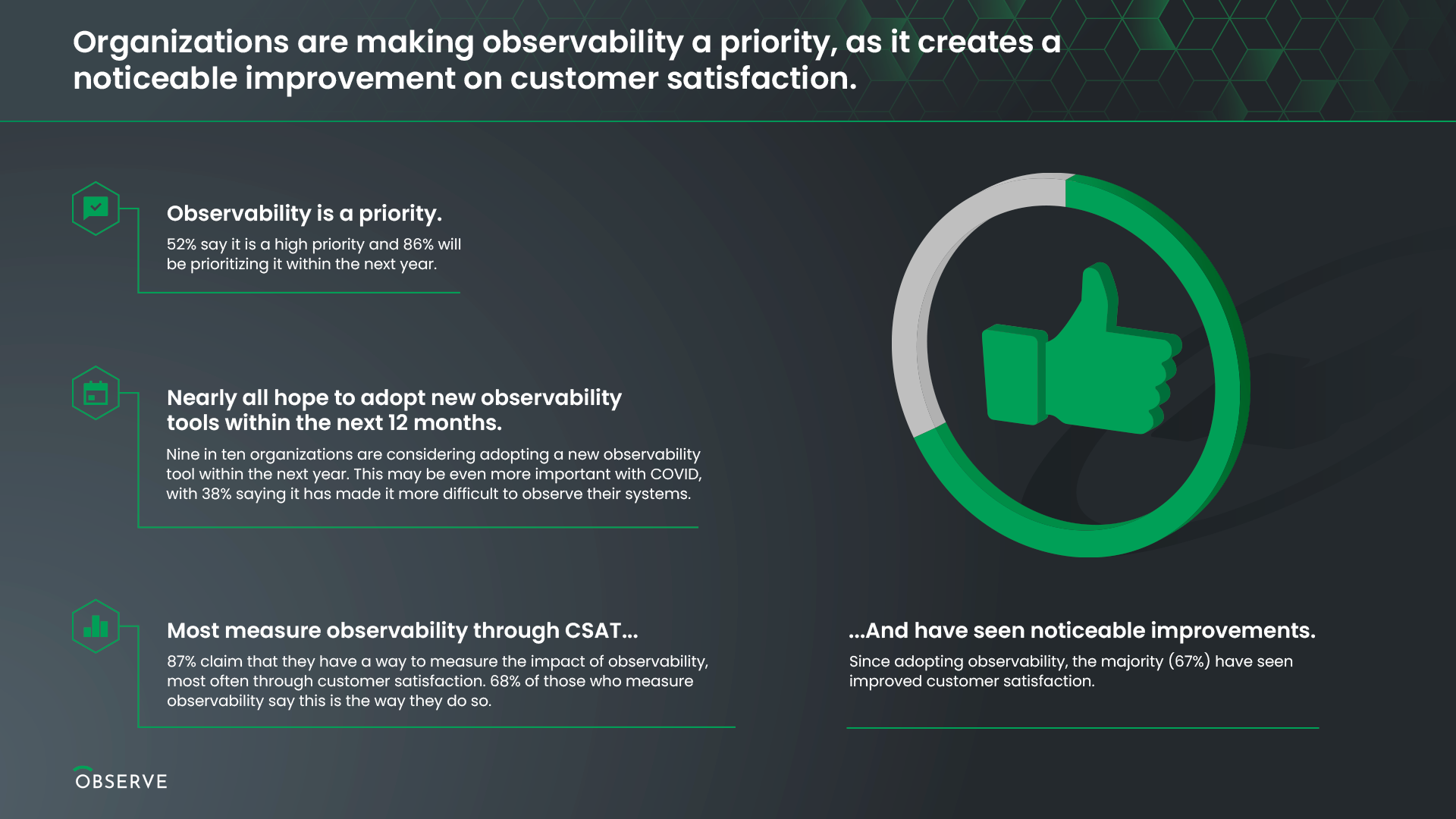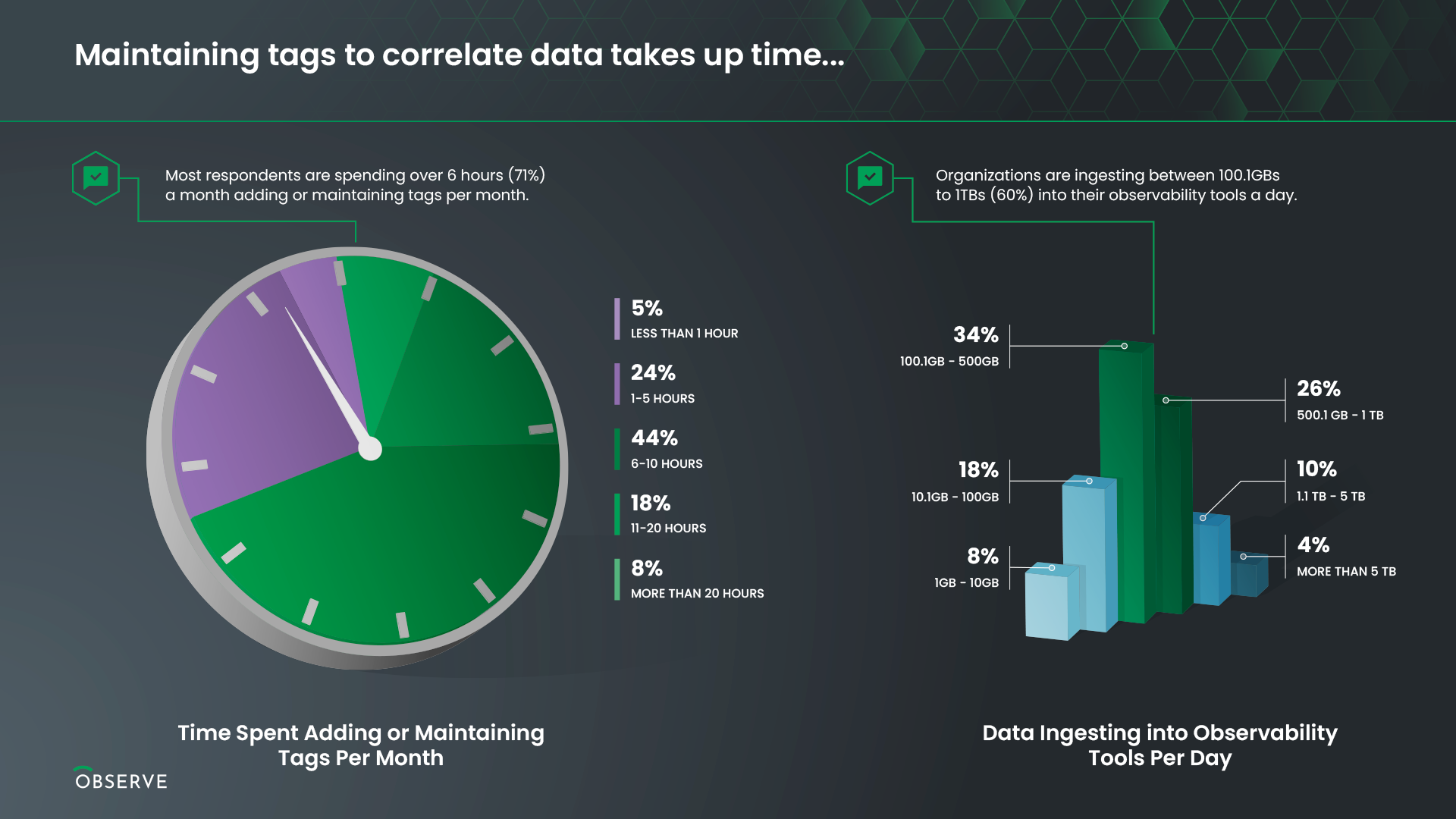

In our 700+ conversations with software professionals the two biggest questions that always come up are “how do I work towards a more observable system?” and “What is the real value of Observability to my business?” To answer these questions we partnered with CITE Research and surveyed 250 IT and software development professionals to understand the struggles, outcomes, and most importantly the journey of observability. Today we are releasing the first edition of our State of Observability report. You can download a copy of it here.
Observability is about the customer
A whopping 87% of respondents said they have a way to measure the impact of observability, and that way is through customer satisfaction. They’ve also seen noticeable improvements. Since adopting observability, 67% of respondents say that they see increases in customer satisfaction.
In a SaaS company, the customer is everything. We think that observability can significantly help decrease net churn and improve net expansion rates. Being able to quickly respond to issues, ask questions about the way your customers use your product, and find issues before they tell you about them, leads to happier customers. Happy customers buy more and leave less often.

O11y is a priority
Observability is here to stay. More than half of respondents said that observability is a high priority, and 86% said that they will be prioritizing it within the next year.
In our customer conversations, we’ve heard a lot of qualitative feedback about how unhappy customers are with their monitoring tools. It’s not surprising to us that 9 in 10 organizations are adopting a new observability tool in the next year. This has only become more important with Covid, which we dig into more deeply as part of the report.
Top Challenges
The top challenges with today’s monitoring tools are:
- No Expertise in Tooling (60%)
- Lack of Context (57%)
- Cost (56%)
These challenges point out the need for Observability. Respondents are having trouble making sense of the morass of machine data their systems create everyday. It doesn’t help that they are burning a holes in their pockets while still struggling to get value.
Once they adopt Observability they find that legacy systems and organizational buy in get in the way. Kubernetes, microservices, and cloud are here to stay, but unfortunately so is everything else that came before it. It would be nice if we could throw out all of the legacy systems that the business is built on, but it’s not that simple. The market demands an observability solution that can deal with bleeding edge technologies while supporting some of the old ones too.

Tags are a nightmare
As you can see above, 57% of respondents found lack of context a top challenge with their existing monitoring tools. To try and alleviate this issue teams are spending up to 20 hours a month maintaining tags. This number wouldn’t be so staggering if they were getting value from that time. According to the survey data, most respondents face 6-20 incidents per month that take on average a few days to investigate. The typical company will use 8 different tools on average to investigate those issues. As companies move to CI/CD, this problem will only be exacerbated.

We are looking forward to running this survey next year and seeing what’s changed. In the report and future blog posts we dig more into our findings around K8s, DevOps Practices, Covid19 Impact, Tagging, Microserices, Tracing, and Legacy Tooling.



